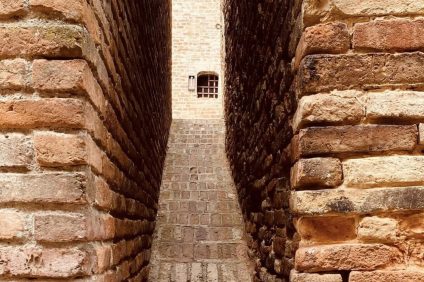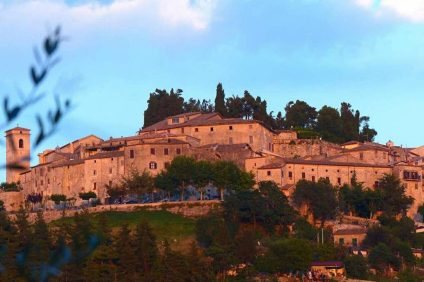Montagnana is one of the most beautiful villages in Italy and, specifically, in the Veneto. An area to discover, between history and natural landscapes. Located in the heart of the Po-Veneto plain, it is far from Padova 56 km and 16 km from the Euganean Hills. It is a Renaissance village, enclosed within defensive walls. An area not to be missed, considering also how it obtained the Orange Flag for its historical beauties and the value of typical products. The historic center is intact, whose medieval fabric is still admirable in its entirety, with buildings with a clear Renaissance style.
The first documents referring to this settlement date back to 996. In these texts a "castrum" is mentioned, as confirmed by other documents in different eras. This second discovery reveals the defensive function of the village for the inhabitants of the neighboring villages.
In Roman times the countryside was inhabited by families of landowners, who lived in rustic villas. After the fall of the Western Empire, the first fortifications began to be erected to face the barbarian invasions.
In 589 a catastrophe struck the area. Following a flood, known as the Rotta della Cucca, the Adige deviated its course 15 km further south, leaving only marshes and marshes in the agricultural territory. In the Lombard period Montagnana became capital of Sculdascia. In the XNUMXth century it was the scene of the invasions of the Hungarians, while in the following century it became a fief of the marquises of Este. In the thirteenth century it was linked to the figure of Ezzelino III da Romano, leader of the Marca Trevigiana. His domination was responsible for the construction of the defensive tower overlooking Porta Padova, known as the Mastio di Ezzelino. Following the Carraresi, it was conquered by the Serenissima Republic of Venice, starting a happy period of peace and economic rebirth.
Montagnana what to see
The visit to Montagnana can only start from Walls, with majestic dimensions and above all a surprising integrity. This is far from obvious, considering the conditions in other ancient Italian villages. Most of it was built in the mid-fourteenth century by the Carraresi, lords of Padua. The exception is represented by the castle of San Zeno and the stretches to the west and east. All driven by the need to counter the power of the Verona Scaligers.
The walls boast Guelph-type battlements, with a height of up to 8 meters and a thickness of up to 1 meter. The structure boasts 24 towers, some of them 20 meters high. A wonderful structure that extends for 2 km to protect the ancient city center. In the past, according to documents, it was surrounded by a large moat filled with water from the Frassine river.
One of the main accesses is near the Fortress of the Trees, a very intriguing medieval defensive structure, built between 1360 and 1362 by the Carraresi. Today we admire the crenellated towers, the fortified entrance, the four gates and the as many drawbridges.
Inserted in the walls there is the San Zeno Castle, whose origins date back to the 40th century. The high walls and the Keep, which reaches XNUMX meters in height, are impressive. There is a large internal courtyard and some clues point out that there was a moat that isolated it from the side facing the city. Today it houses the civic museum, a library and the study center on the Castles.
We list other monuments to admire and discover:
- Duomo - Its style is late Gothic, built between 1431 and 1502. It looks out over the central square. Inside there are works of the fifteenth and sixteenth centuries;
- Magnavin-Foratti Palace - Gothic-Venetian style;
- Villa Pisani - Inserted with the other Venetian villas among the UNESCO World Heritage Sites. Built between 1552 and 1555, today freely open to the public.





